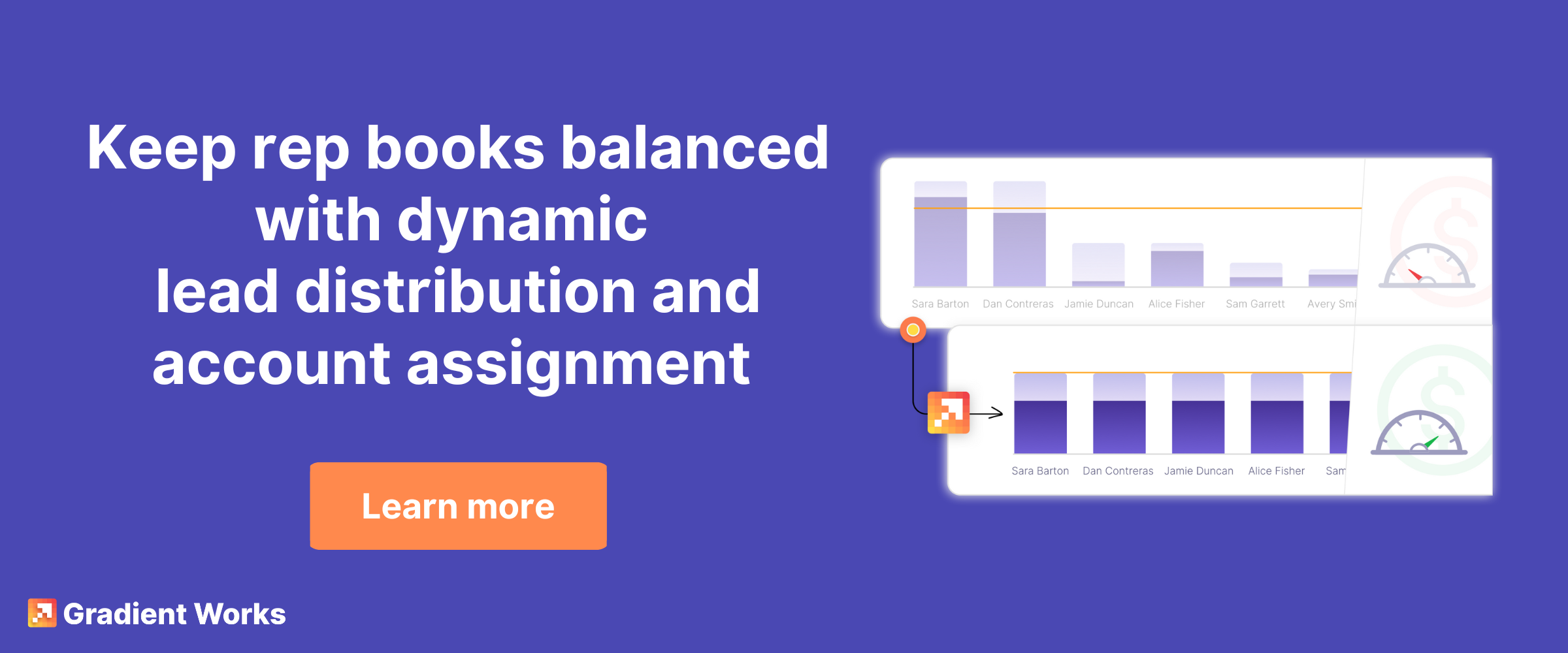Your sales organization likely uses a combination of qualification sources for new leads. You've got MQLs coming from marketing, SQLs coming from your SDR team, and now PQLs (product qualified leads) coming from product usage. So how do you successfully integrate PQLs into your sales motion?
This is written for B2B sales leaders who aren't already focused on an exclusively product led growth model. If you rely only on self-service plans and a light sales touch, this might not be for you. But if you use some combination of outbound BDRs/SDRS, inbound marketing, and product usage to qualify prospects, this is for you. Most B2B subscription companies have some kind of product-qualified lead generation already. But that doesn't mean it's integrated well - or at all - with the rest of your sales process.
And I'm going hand wave away one very complex part of this process: integrating product data in your CRM. That's a topic for a different post. So let's start from the assumption that you have some kind of product usage data flowing into your CRM, and the ability to trigger assignments based on those data. Again, a big assumption, but here we are.
Identifying PQLs
So you're ready to start sourcing leads from your product. Or maybe you already have some level of PQLs but want to formalize your process. Where do you start? Properly working with PQLs requires breaking down how you're offering access to the product along with the ways in which your prospects or customers engage. Here's a handy framework.
| Access Model | Description | PQL Considerations |
| Free Tier | The classic "freemium" model with a no-cost, minimal tier of your product. | Identify engagement that signals interest in higher tiers. Encourage hand-raisers. |
| Free Trial | Prospects temporarily evaluate a fully-featured version of the product at no cost. | Nurture adoption from day one to drive a decision by the end of the trial. |
| Usage-Based | Users start using the product at no or low cost and then pay more as usage increases. | Identify accelerating usage or milestones where you can drive commitments. |
Free tier
If you have a free version of your product, there are likely a number of good leads hiding in your free user base. The issue is identifying them - it's trickier than it might seem at first.
Signals you might look for include high levels of activity, usage of particular features, and regular logins. You can also look at the user themselves. Is the user a good fit for one of your buyer personas? What's their job role and seniority level? If they're not the decision maker, can you get to a decision-maker through them? Further, does the company they work for fit your ICP? Look into firmographics like company size and growth rates, as well as any other specific traits that fit your ICP model.
It's worth asking if a free tier is worth it for your company. Free users can be a drag on customer support resources. They likely don't get the same kind of onboarding paying customers do. They may have more questions than some users. But it may be possible to use those customer support conversations to identify potential upgrades. Look for people asking questions about additional access or features, or users who are talking about more advanced use cases. Beware the support vultures, however.
Free trial (hand-raisers)
When executed thoughtfully, a free trial program can be a great way to source PQLs.
A free trial signup starts a clock ticking on the time you have to close that deal. Have a tight plan your reps follow to nurture prospects through the trial period. You may need to play offense - encouraging an active trial to go deeper or showing them how they can apply what they're doing to something else. Or you may need to play defense - convincing an inactive trial to actually use the product. Different trials will require different sales processes.
Depending on the scale of your free trial program, consider having a sales rep closely monitor every trial's progress with regular check-ins. Unattended trials just don't convert at the same rates as attended trials.
If you're running a high-velocity free trial program, automate check-ins throughout the trial period. Remind users about what they can do in the trial, how they can use your product in their jobs, how much time is left. Ideally, you're doing this in the product itself, as well as through email and other communications.
Make sure there are governors on free trial usage. If you have any one-off but high-value functionality, consider limiting that in the free trial. For example, data exports or detailed reports should only be available to paying users. Otherwise, someone could sign up for a trial, download a comprehensive spreadsheet and then cancel.
Usage-based
Another way to identify PQLs is to look at users who use your product in a certain way. This can fall into two categories: an account that's reached some kind of limit, such as on user logins or data used, or an account that's achieved certain product milestones, signs they're successfully using your product.
If an account is adding users, that's a good signal. Also, look at who those new users are. Are they individual contributors, leadership, or operations? Different roles will mean different things, but generally, the more users are active in your product, the harder it will be to stop using your product.
If user engagement isn't your key usage metric, then you obviously need to focus on that metric as well. Are there certain features that drive usage with historically successful customers? Or maturity milestones an account can reach? Product marketing can play a role in determining the criteria for a PQL - they sit at the intersection of product and your GTM teams, so they have a deeper understanding of both your sales process as well as your product. Once you've identified those criteria, make sure you can instrument them in your CRM (hand wave, hand wave).
A big concern with a usage-based PQL is account assignment. If someone is already a paying customer, who owns that account? Is that the same person who will own the upgrade or expansion? More on assignment in a minute.
A note about hand-raisers
If someone proactively reaches out to learn about an upgrade, this can be a strong buying signal, but it isn't always. Regardless, if someone raises their hand to say they're interested in an upgrade or demo, get back to them quickly. These leads likely don't require additional BDR qualification before going to an AE or AM, since they've volunteered to learn more.
Always include a way to upgrade or contact sales in the product itself. Make it easy for a user to learn more. And include information about the path they used to raise their hand in your CRM. For example, if they were in a particular part of the product when they requested a demo, that tells you something about what they're interested in.
Assigning PQLs
Once you've identified a PQL, you need to assign that account to someone. So let's talk about PQL routing and assignment. It can be tricky to weave these into your other routing and assignment rules for "traditional" qualified inbounds.
There are a number of ways to decide how to assign PQLs. For free users, you may send product-qualified users to a BDR team for further discovery. You may send PQLs that are paying users to an account management team for expansion. You may send trials to your new business team. You may form a cross-functional growth team that focuses exclusively on growing free and low-cost accounts.
No matter what, you need crystal clear rules of engagement and compensation structures.
Let's take free trials as an example. If someone has been using your product for a few weeks, they're going to have different assumptions and information than a prospect who came in from a whitepaper download. Are your sales reps prepared to handle the differences between those prospect types? Or do you have some reps work trials and others work MQLs? If so, how will compensation be structured?
There's a lot that goes into making this work.
Once you've figured out your rules of engagement and you know where product-qualified leads will be routed, you need to figure out how to actually route them. PQLs are almost always existing accounts, so lead-to-account matching is extremely important for determining account ownership. You have to know what account the user you've identified as a PQL is associated with. You can read more about lead-to-account matching here.
You can use PQLs alongside the MQLs and SQLs you already rely on if you take a thoughtful approach to how and where you identify new product-qualified leads, as well as how you'll ensure clear ROE for PQL account ownership. Hopefully this framework helps you get there.





